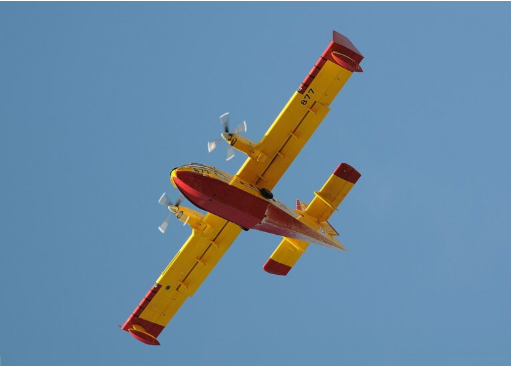
A Culver City man has pleaded guilty to charges related to a reckless drone collision with a firefighting aircraft, an incident that drew widespread attention for the serious safety risks it posed to both aerial crews and the general public. The man, identified as 33-year-old Eric Turner, admitted to flying his drone into the path of a Cal Fire aircraft battling a wildfire in Southern California last summer, disrupting critical firefighting operations.
The incident occurred during a particularly intense wildfire season, with crews working tirelessly to contain rapidly spreading fires across the state. Turner’s drone collided with a firefighting plane that was being used to drop water and retardant on the flames. The collision, while fortunately not causing physical harm to the crew aboard the plane, led to a temporary disruption of operations and prompted a large-scale search for the responsible drone operator.
The collision took place near a high-risk zone in the San Bernardino Mountains, where wildfires were burning out of control. The firefighting plane, which was equipped with large tanks to hold thousands of gallons of water and fire retardant, was conducting a vital aerial suppression mission when the drone entered its flight path. Drone interference with aircraft, especially those involved in emergency services like firefighting, has become an increasing concern among aviation authorities and emergency response teams.
According to the Federal Aviation Administration (FAA), drones flying in restricted airspace are illegal and can be subject to hefty fines and criminal charges, especially if they endanger manned aircraft. Turner’s drone not only violated these regulations but also endangered the lives of the firefighting team, putting the plane’s pilots at risk of a mid-air collision.
Turner’s guilty plea comes after a lengthy investigation led by the FAA and local law enforcement. Federal prosecutors stated that Turner’s actions were reckless and put lives in danger. The court documents revealed that Turner, who was operating the drone recreationally, had knowingly flown the device into a restricted airspace, despite warnings against flying near wildfire zones.
This incident serves as a stark reminder of the dangers posed by unmanned aircraft in airspace that is already crowded with vital emergency operations, said Michael Harcourt, U.S. Attorney for the Central District of California. The defendant’s reckless behavior not only violated federal law but could have caused severe damage to both the aircraft and its crew members. The consequences of such reckless actions could have been far more catastrophic.
The guilty plea by Turner is part of a broader push by aviation regulators to clamp down on illegal drone activity, particularly in areas where wildfires and other emergency operations are underway. Last year, the FAA reported a significant increase in drone sightings near wildfire zones, which can significantly impair firefighting efforts and hinder the safety of those involved in emergency responses.
Under the terms of his plea agreement, Turner faces several charges, including reckless endangerment, operating an unmanned aircraft in restricted airspace, and obstruction of firefighting operations. The maximum sentence for these offenses could include up to five years in prison, though a judge will determine the final sentence based on the facts of the case.
In addition to the legal consequences, Turner may also be required to pay restitution to cover the costs incurred by the firefighting operations that were delayed due to the drone collision. Firefighting teams use specialized aircraft to combat wildfires, and any delay in these operations can have significant consequences, including the potential spread of fires to populated areas.
Drone safety has become an urgent topic for lawmakers and aviation safety experts. The technology behind drones has advanced rapidly, making them more accessible to the general public, but also raising concerns about the risks they pose when operated irresponsibly. In response, the FAA has imposed stricter regulations and penalties for drone operators who violate airspace restrictions, especially in areas critical to public safety.
The case of Eric Turner highlights the dangerous consequences of such behavior, and legal experts say it may serve as a warning to other drone operators about the severity of violating airspace regulations. Aviation attorney Jessica Clark emphasized the importance of education and awareness for drone users. It’s crucial for drone operators to understand the laws surrounding airspace restrictions, especially when it comes to emergency response areas. A drone may seem harmless, but when flown in the wrong place at the wrong time, it can be deadly.
California has been at the forefront of addressing drone-related incidents near wildfires. Local fire departments, in collaboration with the FAA and law enforcement agencies, have been ramping up their efforts to monitor drone activity in high-risk zones. In recent months, several drone operators have been fined or arrested for similar offenses, underscoring the need for increased vigilance and enforcement.
In his statement, Turner expressed remorse for his actions and acknowledged the potential danger he caused. He has agreed to cooperate with authorities in ongoing efforts to educate the public on safe drone usage and to assist in efforts to prevent future conflicts between drones and manned aircraft.
As the legal process unfolds, Turner’s case will likely have lasting implications for how drone operations are regulated, especially in the context of emergency services like firefighting. For now, aviation safety experts and fire officials are hopeful that this case will serve as a deterrent to other drone operators, reinforcing the message that reckless drone usage near emergency operations will not be tolerated.
The incident has already sparked further discussions about the need for stronger enforcement and better technological solutions to detect and prevent drones from interfering with critical operations. With drones becoming increasingly common in various sectors, including photography, delivery services, and even search-and-rescue missions, authorities are working to strike a balance between encouraging innovation and ensuring public safety.
Turner’s case will likely continue to be a focal point in debates about the future of drone regulation and how to best manage their integration into the national airspace system.

